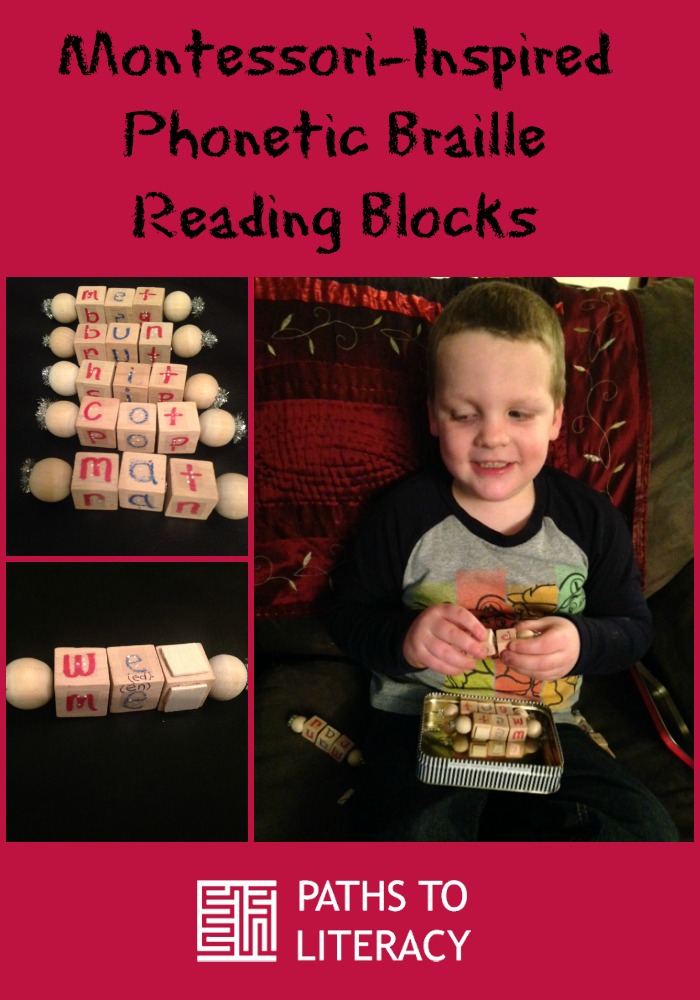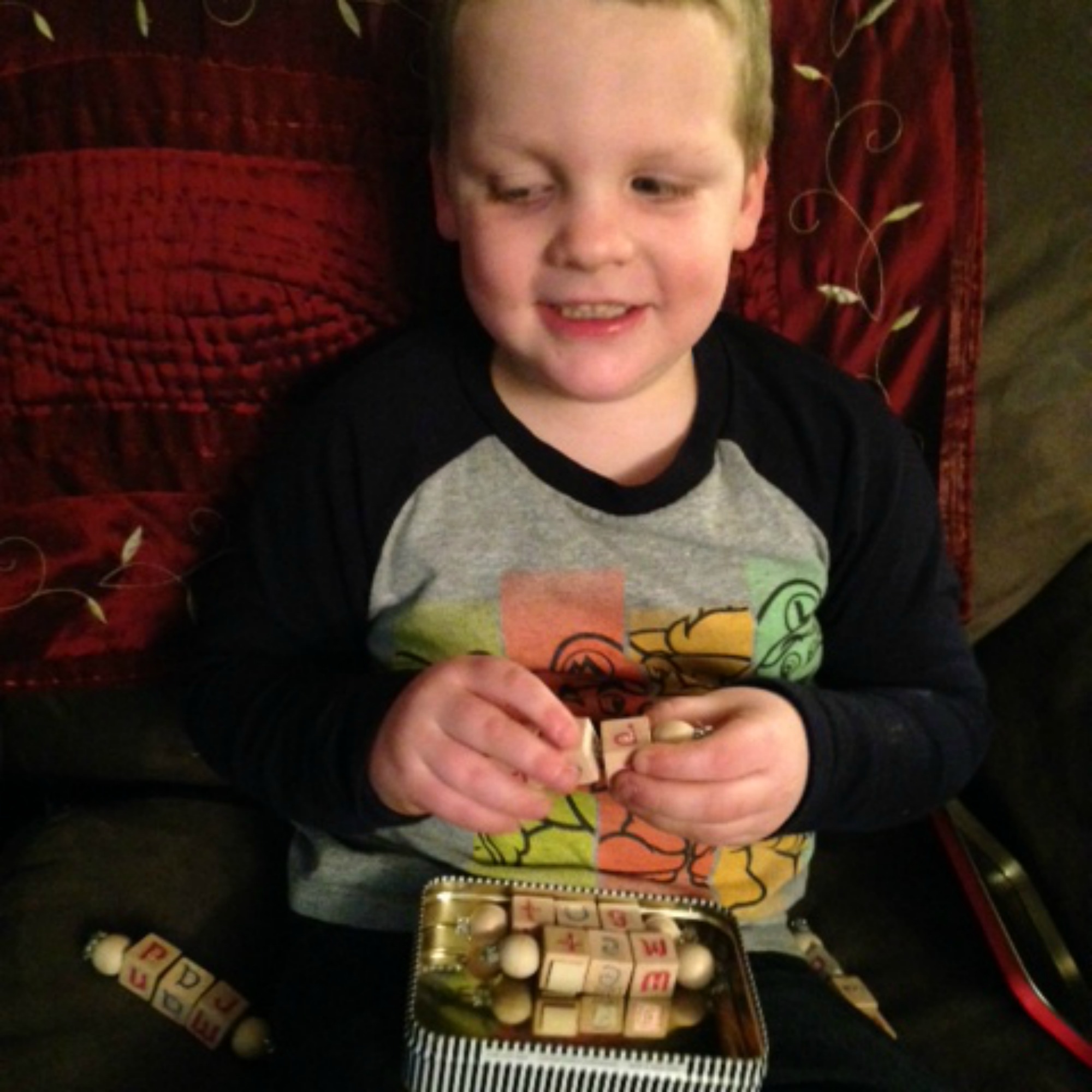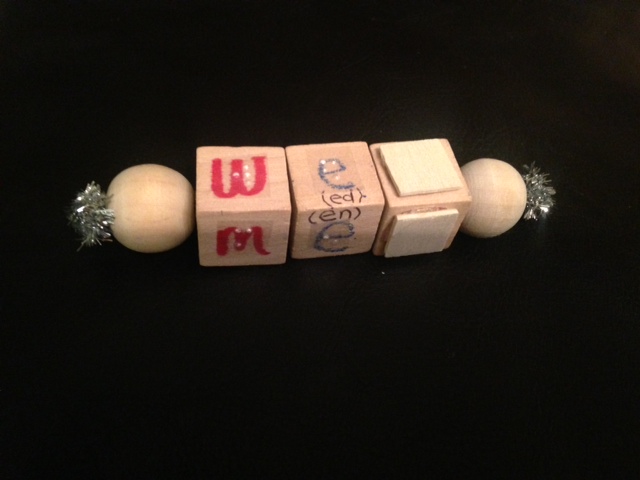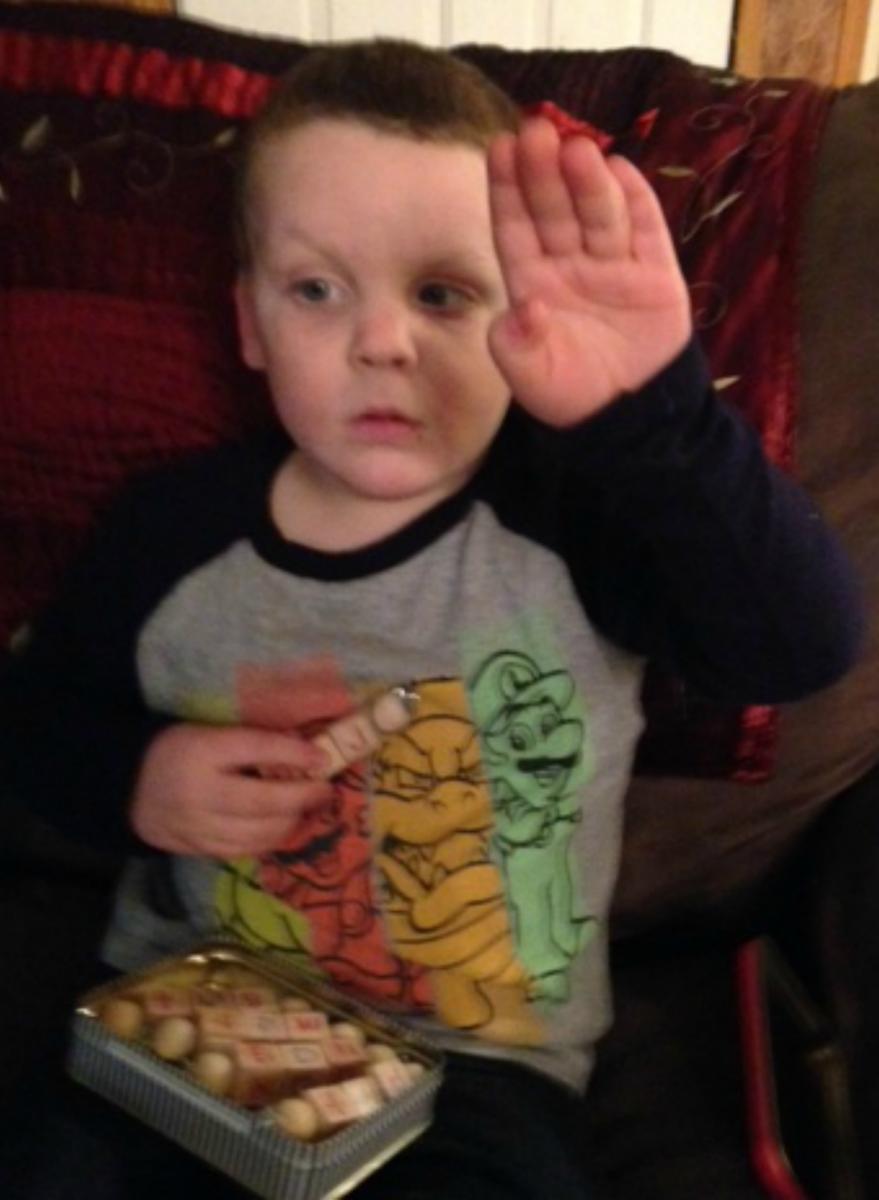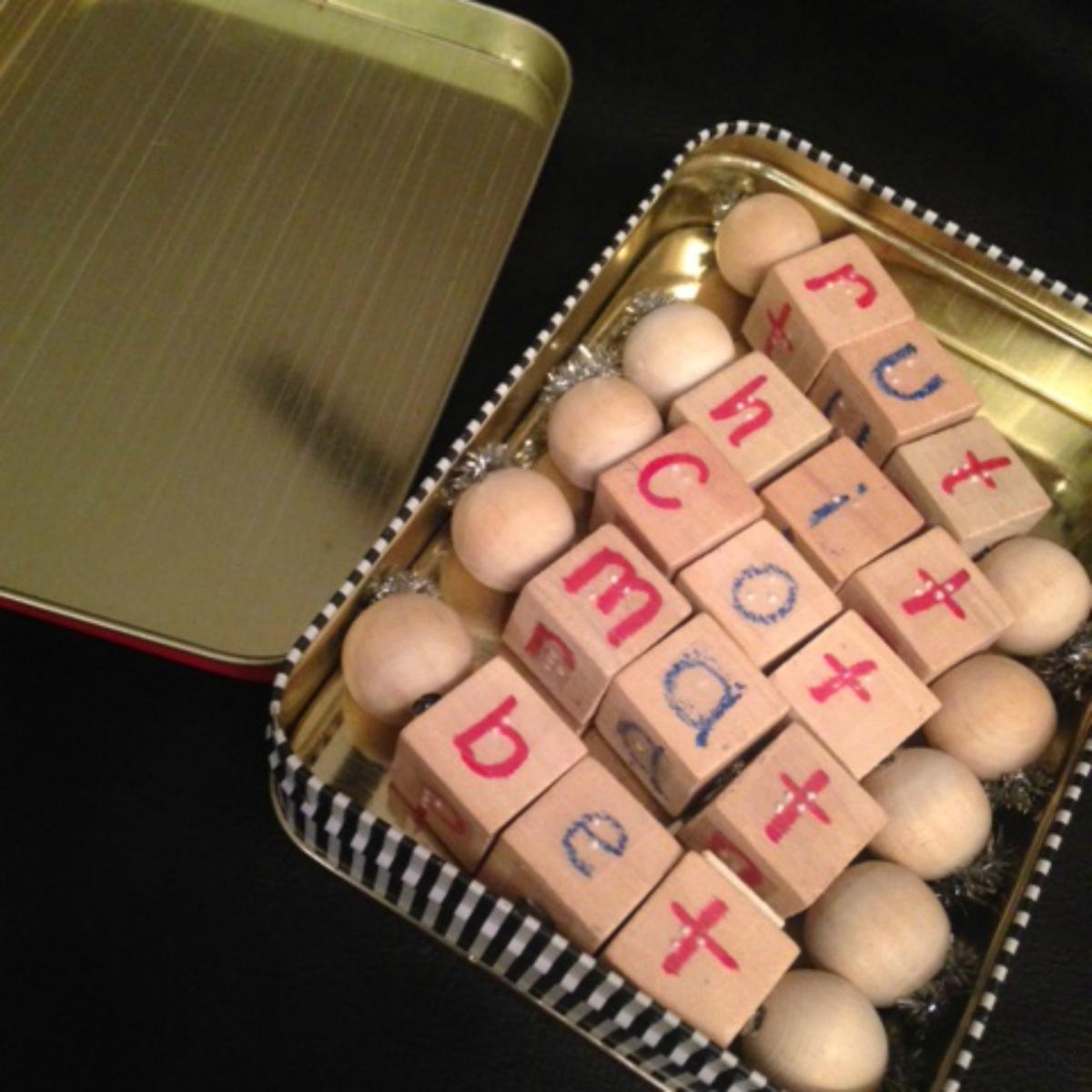This past November I attended the “Getting in Touch With Literacy” Conference in New Mexico (a national conference focusing on the literacy needs of individuals with visual impairments). One of the “break-out” sessions was about a Montessori educational approach. I was inspired and saw many ways how Montessori learning activities and tools could be easily adapted for children with visual impairments. When I got home from the conference I searched on Pinterest for Montessori tools and found many!
Phonetic Reading Blocks
An example of one I found online that used print: Phonetic Reading Blocks. The consonants were printed with red ink and the vowels were printed using blue ink. You could purchase them and modify them yourself or you can make your own! I wanted to create my own and modify the blocks for my son who is in first grade and reads using braille. I bought some wooden cubes at Michaels and had holes drilled through them (thanks to my dad). I put them together with pipe cleaners with wooden balls at the ends so that the cubes could “spin” and words could be created.
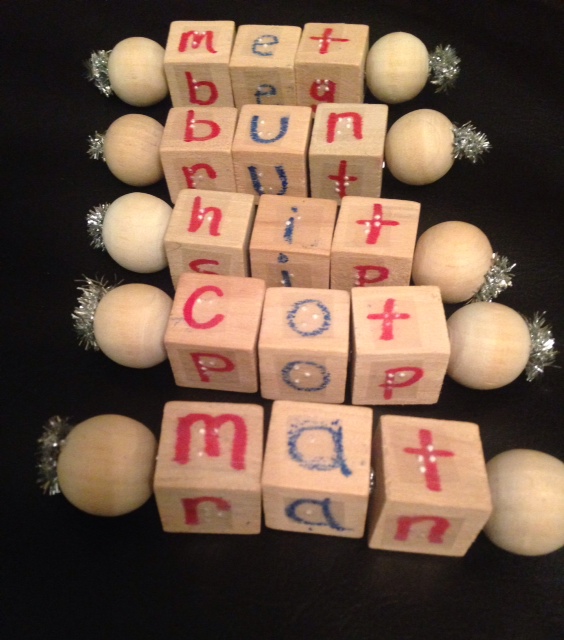
I chose to use CVC pattern with three letters (Consonant Vowel Consonant). You can find a variety of different word lists for free if you search for them online. I added braille to the cubes (and also print so it would be easy for family and friends to read the blocks with him).
Choosing Letters for Blocks
Note: Be intentional when choosing letters for your blocks. My first attempt, when making the “e” centered reading block string, words ending in -ed and -en were created. I didn’t think about the fact that they should have been contractions until AFTER I made the blocks. I had a couple of options for an easy fix. I could have changed the endings to not include contractions or I could add the contractions onto the blocks. Adding the contractions was what I decided. I added the -ed and -en contractions to two of the “e” center blocks and then I left two of the end blocks blank. This block will be different than the others (again, my choice and doesn’t have to be that way) and will present an opportunity for some discussion with my son about the words and the contractions.
Materials
- wooden cubes (such as those sold at Michaels)
- pipe cleaners
Procedure
Your child can enjoy these blocks by spinning the blocks to create new words. You could also ask the child to create a word and they have to spin the blocks to create the word you requested. These blocks present a great opportunity to discuss new vocabulary words that the child may not know yet.
Variations
- You could use other patterns on your block sets such as CVC with silent “e”.
- Another possibility is to create words using contractions. Ex: contraction ‘ea’ instead of single letters only. You could also do words that end with ‘th’. These reading blocks are great practice for whatever word patterns or contractions your child is working on.
- You could add some sort of tactile mark (perhaps puffy paint the border of the cube) for vowels just as the “printed” blocks used red and blue for consonants and vowels.
Link to the blocks I found on Pinterest (they are sold on Etsy): https://www.etsy.com/listing/86225492/montessori-phonetic-reading-blocks-eco
